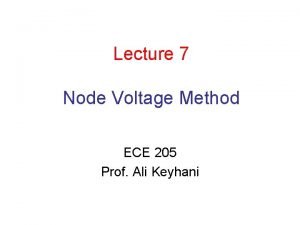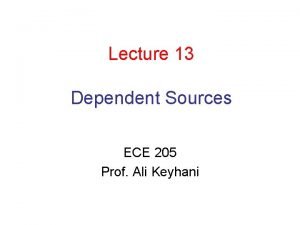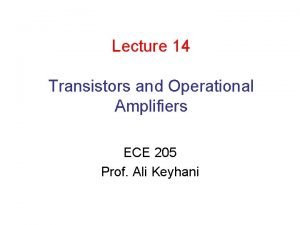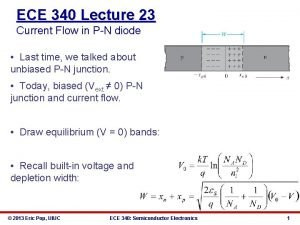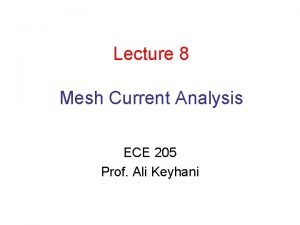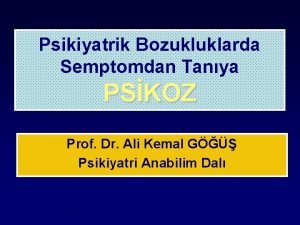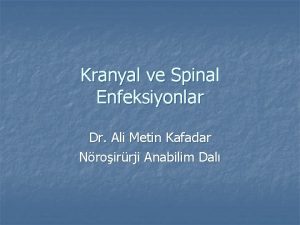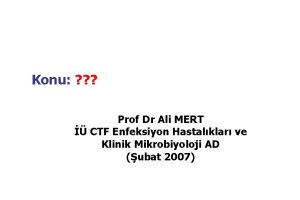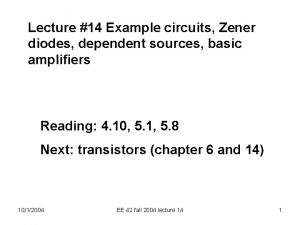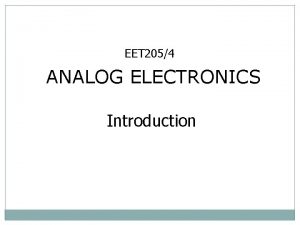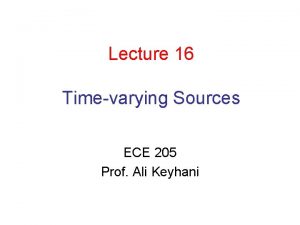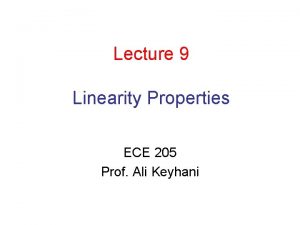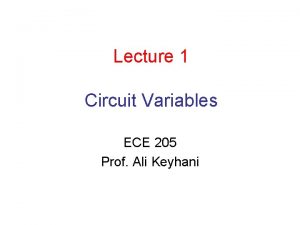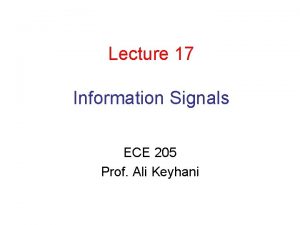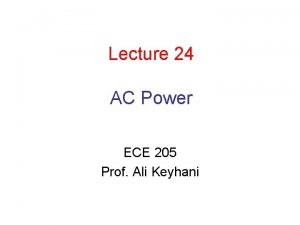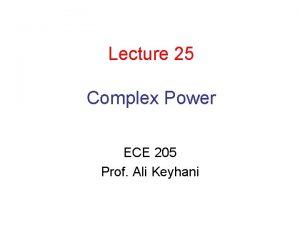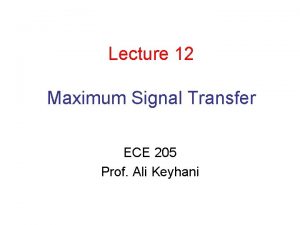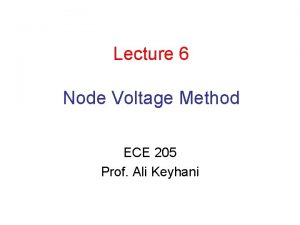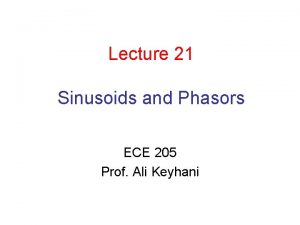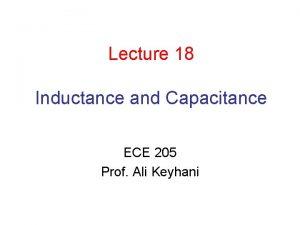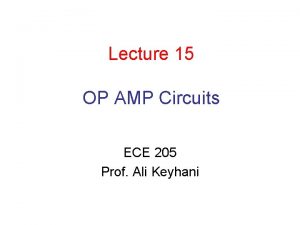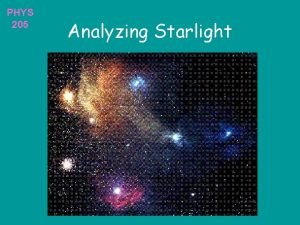Lecture 13 Dependent Sources ECE 205 Prof Ali


















- Slides: 18

Lecture 13 Dependent Sources ECE 205 Prof. Ali Keyhani

Active Devices • Active Device: Device that are dependent on an external power supply to operate • Active Circuit: Circuits that contain one or more active devices • Linearly active devices: input-output relationship of the active devices is governed by the equation: y=Kx • K is called the proportionality factor

Dependent Sources • Linear active devices are usually modeled using resistors and dependent sources • Dependent sources: a voltage or current source whose output is controlled by a voltage or current in another part of the circuit • Depending on the type of the source and the control there are four types of dependent sources

Dependent Sources • Current Controlled Voltage Source (CCVS) • Voltage Controlled Voltage Source (VCVS) • Current Controlled Current Source (CCCS) • Voltage Controlled Current Source (VCCS)

Dependent Sources • All the linearly dependent sources have an output proportional to the input current or voltage as y=Kx • The proportionality factor is called gain in the dependent sources • Voltage gain: μ (dimensionless) • Current gain: β (dimensionless) • Transresistance (transfer resistance) : r (ohm) • Transconductance (transfer conductance): g(siemens)

Circuit Analysis with Dependent Sources • Turning on and off the dependent voltages sources requires turning on and off their independent sources • Superposition, source transformation and circuit reduction also apply to active circuits

Example 1 • What is the output voltage, current and power?

Current division to find ix: Dependent voltage source: Current division:

Input-output relationship of the circuit: Signal inversion: K=-6000 which means input and output have opposite signs Output power: Input power:

• Power gain of the system is greater than one:

Example 2 Find the output voltage vo in terms of input voltage vs.

Example 2 Solution:

Node Voltage Analysis with Dependent Sources • To write the node voltage equations first the dependent sources are treated as independent sources • After writing the symmetrical equations the dependent sources are expressed in terms of the node voltages • The new sets of non-symmetrical equations are solved to find the unknown node voltage equations

Example 3 a) Formulate node-voltage equations b) Find vo and io in terms of is.

• Solution: a) Symmetrical node-voltage equations: Since vx=v. A the equations can be simplified:

b) vo=v. B therefore by solving the equations the v. B is found:

Mesh Current Analysis with Dependent Sources • The same pattern as the node-voltage analysis is followed – The mesh current equations are written as if the sources are all independent – The dependent sources are then replaced by their equivalent expression in terms of unknown mesh currents

Example 4 Find current io with mesh analysis.
 Node voltage method
Node voltage method Ece 205
Ece 205 Ece 205
Ece 205 Ece 205 uiuc
Ece 205 uiuc Ece 205
Ece 205 Prof dr ali hossain
Prof dr ali hossain Prof dr ali atan
Prof dr ali atan Avolisyon
Avolisyon Subperiostal abse
Subperiostal abse Prof. dr. ali fuat güneri
Prof. dr. ali fuat güneri Prof dr ali mert
Prof dr ali mert Zener diode
Zener diode Print sources of information
Print sources of information Importance of water resource management
Importance of water resource management 01:640:244 lecture notes - lecture 15: plat, idah, farad
01:640:244 lecture notes - lecture 15: plat, idah, farad Ar 623-205
Ar 623-205 205 binary
205 binary Non rated codes ncoer
Non rated codes ncoer Eet 205 syllabus
Eet 205 syllabus
